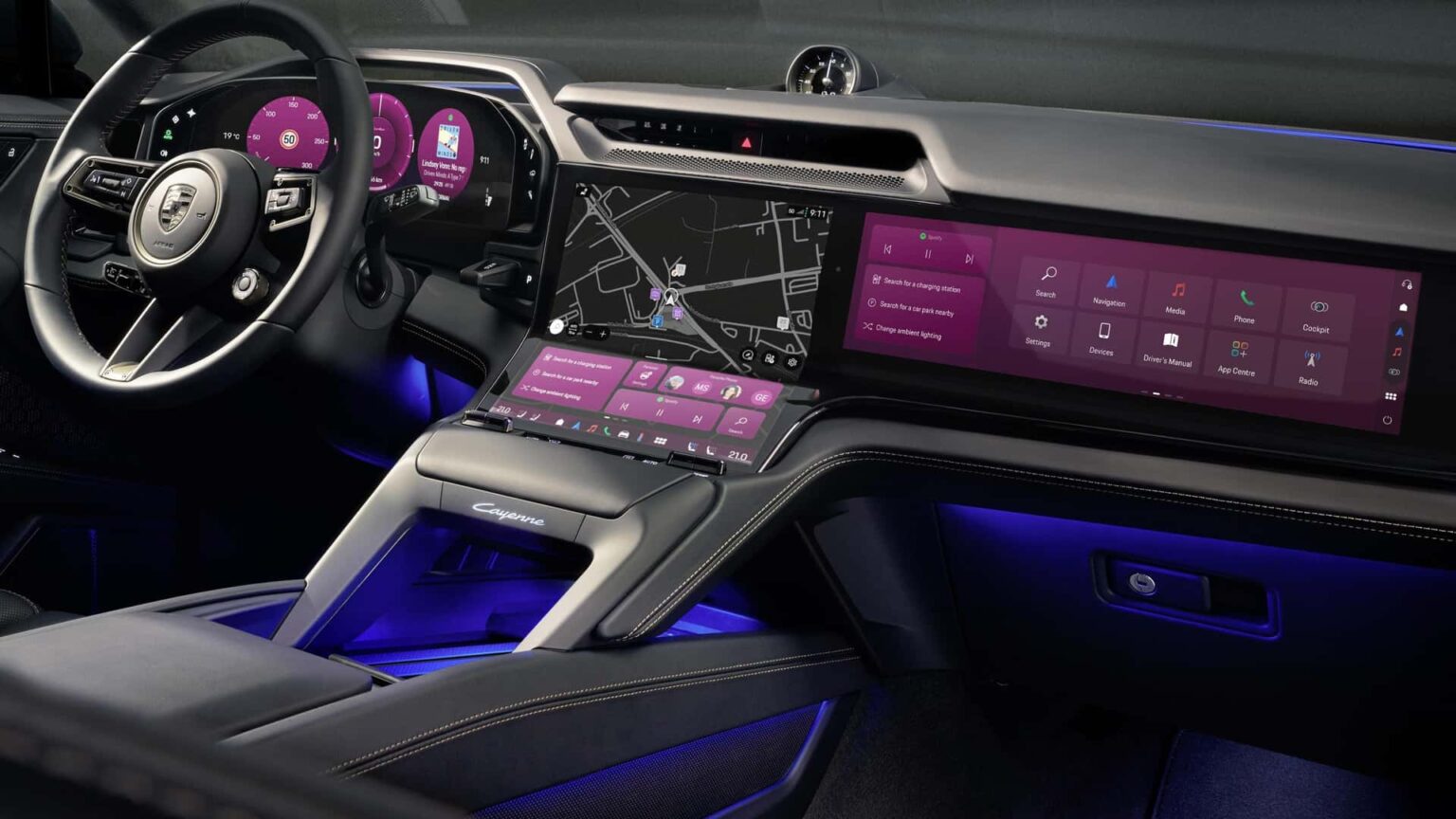Porsche’s recent decision to reinvest in combustion engines shows that EV adoption isn’t progressing as quickly as Zuffenhausen had hoped. Even so, the renewed focus on traditional drivetrains isn’t derailing plans for an electric Cayenne. It’s still on track for a reveal later this year, and in the meantime, we’re getting an early look inside the cabin.
Because it’s 2025 and screens dominate interiors, the Cayenne Electric features the “largest display area of any Porsche to date.” The 14.25-inch digital instrument cluster and optional 14.9-inch passenger screen flank a so-called “Flow Display.” This curved OLED extends down the center console and houses most of the climate controls. A few physical switches remain, though far fewer than in the combustion-powered Cayenne.
Unlike the Taycan, with its separate central screens, the Cayenne Electric merges them into a single unit, creating the impression of a supersized flip phone. A hand rest sits in front of the sweeping display, making it easier to use both the lower portion of the screen and the adjacent switches. The central air vent has been relocated to the top of the dashboard to accommodate the unified display.
Elsewhere, higher trims of the gas-free Cayenne feature heated armrests for both the front and rear doors, as well as a heated center console cover. Porsche will also offer its largest-ever panoramic glass roof, split into nine segments that can individually switch from opaque to clear at the touch of a button. Unlike most glass roofs, this one still opens at the front, like a conventional sunroof.
Photo by: Porsche
Beyond the interior, Porsche is also teasing some juicy preliminary specs. The top version with launch control is going to have more than 1,073 horsepower and a staggering 1,106 pound-feet (1,500 Newton-meters) of torque. For such a large and undoubtedly heavy SUV, performance is impressive: 0-62 mph (100 km/h) in under three seconds, 0-124 mph (200 km/h) in under eight seconds, and a top speed exceeding 155 mph (250 km/h).
The battery is a 113-kWh lithium-ion pack with seven percent higher energy density than the Taycan’s. On a full charge, the range is estimated at more than 373 miles (600 km) under the WLTP cycle. With 400-kW charging, a 10-80 percent recharge takes around 15 minutes. For those who’d rather skip cables, an 11-kW wireless charging pad will debut in Europe in 2026 before expanding to other markets.

141
Source: Porsche
The Cayenne Electric gets sophisticated tech like standard air suspension and optional rear-wheel steering to reduce the turning circle by one meter to about 11.1 meters. At an additional cost, ceramic brakes exclusive to the flagship version feature massive 440-mm front and 410-mm rear discs. The range topper also gets a standard electronically controlled differential lock at the rear. The self-leveling Active Ride system already found in the Panamera and Taycan will be offered as well.
For gas engine traditionalists, the Cayenne Electric’s debut doesn’t spell the end for combustion-powered versions. Porsche plans to keep the ICE Cayenne well into the next decade. The strategy mirrors that of its other SUVs: the electric Macan will coexist with a new gas-powered crossover due in 2028, and a three-row SUV originally envisioned as an EV-only model will launch first with combustion engines before an electric version arrives.
Read the full article here



